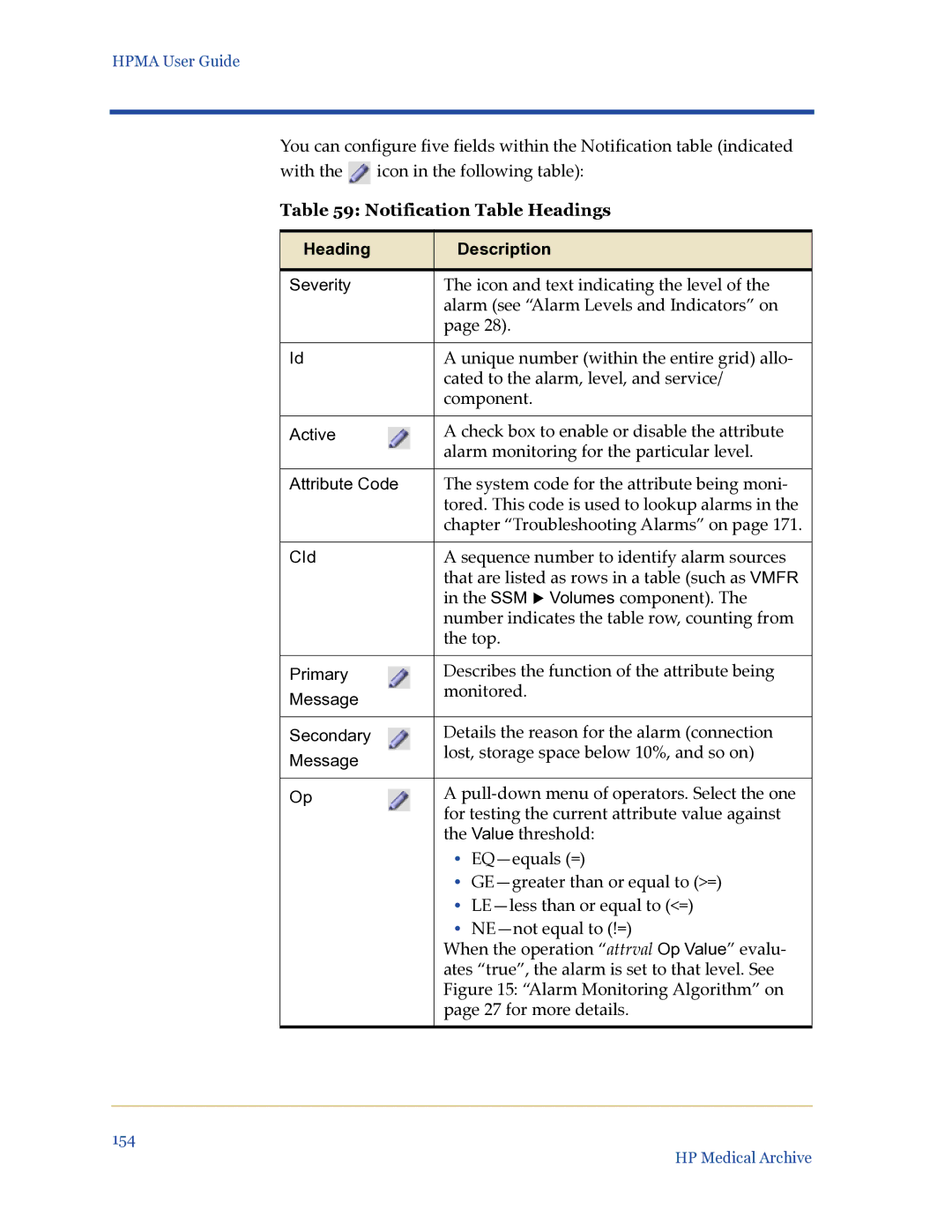
HPMA User Guide
You can configure five fields within the Notification table (indicated with the ![]() icon in the following table):
icon in the following table):
Table 59: Notification Table Headings
Heading | Description |
|
|
Severity | The icon and text indicating the level of the |
| alarm (see “Alarm Levels and Indicators” on |
| page 28). |
|
|
Id | A unique number (within the entire grid) allo- |
| cated to the alarm, level, and service/ |
| component. |
|
|
Active | A check box to enable or disable the attribute |
| alarm monitoring for the particular level. |
|
|
Attribute Code | The system code for the attribute being moni- |
| tored. This code is used to lookup alarms in the |
| chapter “Troubleshooting Alarms” on page 171. |
|
|
CId | A sequence number to identify alarm sources |
| that are listed as rows in a table (such as VMFR |
| in the SSM X Volumes component). The |
| number indicates the table row, counting from |
| the top. |
|
|
Primary | Describes the function of the attribute being |
Message | monitored. |
| |
|
|
Secondary | Details the reason for the alarm (connection |
Message | lost, storage space below 10%, and so on) |
| |
|
|
Op | A |
| for testing the current attribute value against |
| the Value threshold: |
| • |
| • |
| • |
| • |
| When the operation “attrval Op Value” evalu- |
| ates “true”, the alarm is set to that level. See |
| Figure 15: “Alarm Monitoring Algorithm” on |
| page 27 for more details. |
|
|
154
HP Medical Archive
